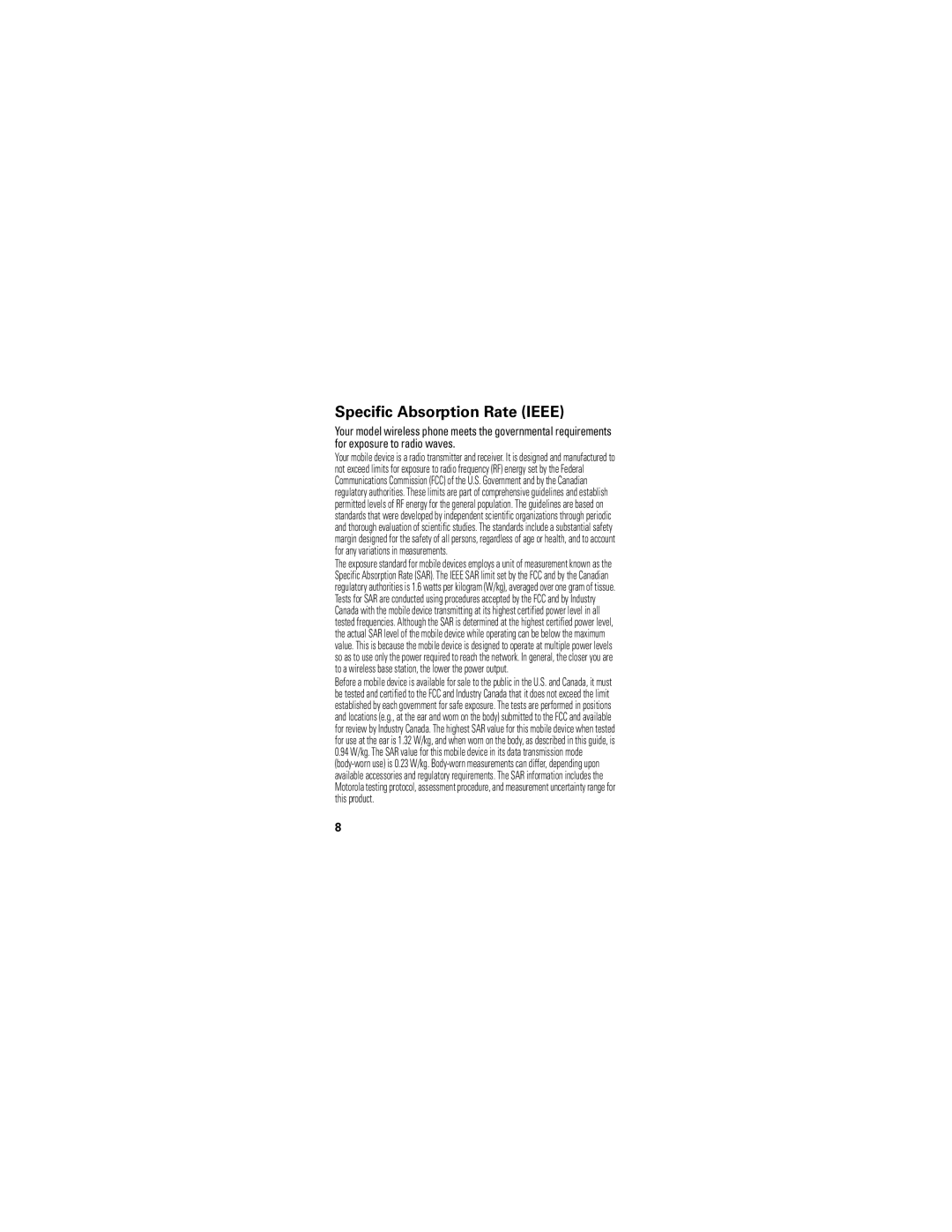XT300 specifications
The Motorola XT300, commonly known as the Motorola Backflip, is a unique smartphone that gained popularity for its innovative design and features when it was launched in 2010. This device represents a distinctive approach to smartphone ergonomics and functionality, appealing particularly to users looking for a combination of style and practicality.One of the standout characteristics of the XT300 is its flip design, which allows the phone to rotate around its hinge. This design not only protects the screen when closed but also utilizes a unique rear-facing keyboard that flips open to reveal a QWERTY layout. This keyboard enhances text input efficiency, catering to users who frequently type messages or emails. The display features a 3.1-inch capacitive touchscreen with a resolution of 320 x 480 pixels, providing vibrant colors and decent clarity for viewing photos, videos, and apps.
The Motorola XT300 operates on the Android 2.1 Eclair platform, which was considered cutting-edge at the time of its release. This operating system provided users with access to a multitude of applications through the Android Market, enabling customization and enhanced functionality. The device comes equipped with an 528 MHz ARM 11 processor, which, while modest by today’s standards, facilitated smooth operation for casual applications and general usage during its era.
In terms of connectivity, the XT300 supports 3G HSPA networks and Wi-Fi, allowing for quick internet access and streaming capabilities. The device also features Bluetooth for connecting various accessories like headsets or keyboards, increasing its versatility.
The camera on the XT300 is a 5-megapixel shooter, featuring autofocus and LED flash, which enables users to capture decent quality photos and videos. While it might not compete with modern smartphone cameras, it was suitable for casual photography during its time.
Battery life is another notable feature of the Motorola XT300, with a removable 1400 mAh battery that offers a respectable standby time, catering to users who rely on their phones throughout the day. With its balance of unique design, functionality, and features, the Motorola XT300 remains a memorable smartphone from the early days of Android devices, showcasing Motorola's commitment to innovation in mobile technology.
